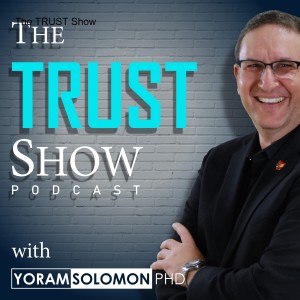

This is the second of a four-episode series addressing how you can tell if you can, and should, trust someone, in whatever relationship you are with them. In the first episode, I explained that you need to first decide what you need to trust them with, and how much you need to trust them, because trust is contextual and continuous.
The decision to trust is based on the components of my relative trust model. It has 6 components in two groups. One group includes the who they are components of competence, personality compatibility, and symmetry. The second group includes the what they do during an interaction with you, and is more of a firsthand experience you have with them, and your judgement, or gut feeling of them.
In this episode, I will cover the who they are components, and how you can improve your accuracy in predicting if you can trust the other person based on them.
More Episodes
All Episodes>>Create Your Podcast In Minutes
- Full-featured podcast site
- Unlimited storage and bandwidth
- Comprehensive podcast stats
- Distribute to Apple Podcasts, Spotify, and more
- Make money with your podcast












